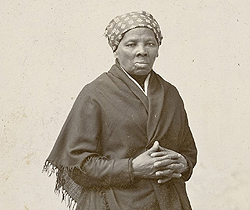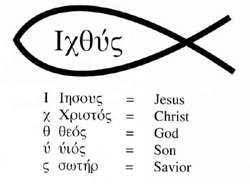|
Secret Codes and Signs by Rolaant McKenzie |
|||
|
The Underground Railroad was a network of secret meeting places, pathways and safe houses used by slaves in the United States to escape slave-holding states to free states in the north and Canada from the late 18th century until about 1862 after the start of the Civil War. It is estimated that between 1810 and 1860 more than 100,000 slaves made it to freedom using this network. Codes and hidden messages were essential in providing slaves what they needed to know to make a successful escape from bondage. The railroad in North America was a new and emerging form of transportation in the early 1800s, so those involved in aiding escaping slaves made use of the vernacular of railroad conductors and workers. Such language could be used as codes in verbal and written communications without revealing their activities to slave masters, bounty hunters, law enforcement, or spies. For example, words such as "agent," "conductor," and "baggage" respectively referred to those who planned escape routes and contacts, the one who personally transported slaves to freedom, and fugitives that were expected. Other words such as "Canaan," "Promised Land," and "Heaven" referred to Canada and freedom. Constellations played an important role in helping slaves escape without getting lost or captured. "Following the drinking gourd" was code for using the Big Dipper to find the North Star. As long as they followed the North Star, which remains stationary in the night sky, they would successfully make their way north to freedom.
"Spirituals," a form of Christian music of Black American origin, contained codes that were used to convey messages and give directions. Slaves could sing songs in the presence of their masters secretly communicating messages when slaves should prepare to escape and where to go. One of the most prominent figures of the Underground Railroad was an escaped slave named Harriet Tubman (c. 1820-1913). "Moses" was her code name. In spite of a bounty on her head, she became a "conductor" who made 13 trips to Maryland and led to freedom 70 slaves before the Civil War. Tubman made use of the codes of the Underground Railroad to help in her dangerous missions. She also sang songs such as "Go Down Moses" and "Bound for the Promised Land," sometimes in different tempos, to let escaping slaves know when it was safe to leave cover or remain hidden. Notwithstanding the efforts of slaveholders and their associates, Tubman and the fugitives she assisted were never captured. Speaking at an 1896 women's suffrage convention in New York, she said:
In the early church when many Jewish people were coming to faith in Jesus, they faced ostracism, loss of livelihood, loss of family relationships, imprisonment, and threats to their lives from the local religious and civil authorities in Jerusalem and the surrounding regions. These early believers came together to help each other through the harsh times they faced and build up their faith (Acts 2:42-47). The community of believers grew to include Gentiles as the gospel was spread throughout the Roman Empire. Periods of severe Roman persecution caused these early Christians to come up with their own secret codes and signs. The "fish symbol" -- also called "Ichthys" (ik-thoos), a Greek word for "fish" -- was such a sign. It was in use during 1st century AD Greek culture and represented a vessel of fish and fertility of life.
During the 2nd century AD when Christianity was periodically outlawed, Christians used this symbol to surreptitiously let other believers know where it was safe to meet for worship and fellowship. Because this symbol was also used by some pagan religions, it did not arouse suspicion from those hostile to Christianity. They thought this a fitting symbol since Jesus called on His followers to be "fishers of men" (Matthew 4:19), and eternal life came through faith in Him. Even the individual letters of the Greek alphabet comprising the word "fish" was used as an acrostic to represent the words: "Jesus Christ, God's Son, Savior." If a Christian was unsure another person was a believer or enemy, he would draw half of the fish on the ground and wait for the other person to draw the other half. If he did not follow with this countersign, it meant the other person was not a Christian, but the curved line on the ground looked like nothing special or something that would alert an adversary. If the other person completed the image of the fish, then it was clear that he was also a Christian and that they could safely speak. The apostle John wrote the Revelation of Jesus Christ around 90-95 AD, during a time of great persecution for the church. He was exiled by the Roman government to a penal colony on the Island of Patmos "because of the word of God and the testimony of Jesus" (Revelation 1:9). The purpose of the book, making use of many signs and symbols, was to reveal present events and what was to come in the end, culminating in the second coming of Jesus and the permanent establishment of His kingdom in a new heaven and earth. It was to strengthen the faith of believers in Christ as they endured persecution and severe adversity and provide assurance that the goodness of God will overcome evil, sin, and death forever. Like the followers of Jesus in the early centuries of the church, the Christian faith held by many slaves in the early decades of the United States helped them to develop a clandestine language that bound them together as a community. Their faith in God offered the promise not only of freedom and eternal life with Jesus, but the possibility of deliverance and liberty in the present life, no matter their current dire circumstances. This hope encouraged them to endure great hardship and danger, and also bound them together with those who at great risk to themselves provided their homes, food, clothing, and supplies needed for the journey northward to freedom. As Christians around the world today face increasing levels of persecution and adversity brought upon them by their governments, including in some Western countries, we have the benefit of the experiences of "a great cloud of witnesses" in the Bible and history to encourage us to remain faithful to Jesus (Hebrews 12:1-3) and proclaim the gospel. As global elitists seek to hem in and enslave us through contrived dependence and pervasive surveillance technology, we may like believers of the past need to develop our own secret codes, signs, and connections to help one another and build community as the early Christians did in Acts 2 and elsewhere in history. This would help bring the true body of Jesus Christ together in the power of the Holy Spirit so that it can be an oasis of encouragement in the midst of a harsh desert, equip it to be salt and light in an increasingly decaying and darkening world (Matthew 5:13-16), and enable the proclamation of the gospel so that all who believe will be able to join the great innumerable assembly around the throne of God in true freedom and unending joy (Revelation 7:9-17). |
|||
|

